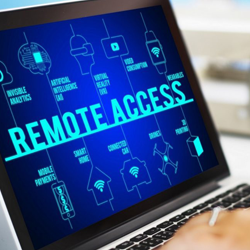

Video surveillance systems, also known as CCTV (Closed-Circuit Television), are security systems that use cameras to monitor activities in a specific area. They are widely used in various locations for security, safety, and monitoring purposes. Here's a breakdown of their key components and functionalities:.

Cameras
These are the core elements that capture video footage of the monitored area. They come in various types, such as bullet cameras for wide-angle views, dome cameras for vandal resistance, and PTZ (Pan-Tilt-Zoom) cameras for adjustable viewing angles.

Recording Device
Captured video footage is typically stored on a Digital Video Recorder (DVR) or Network Video Recorder (NVR). DVRs use analog signals, while NVRs work with digital video formats. Some systems might also use cloud storage for recordings.

Monitors
These display the live feed from the cameras, allowing security personnel or authorized viewers to monitor activity in real-time.

Cables
Connects the cameras to the recording device and monitors, transmitting video signals. (In some modern systems, wireless connections might be used)

Monitoring
Video surveillance systems provide real-time visual monitoring of a location, allowing security personnel to deter crime, identify suspicious activity, and monitor overall safety.

Recording
The systems record video footage for later review. This recorded footage can be used as evidence in case of criminal activity or incidents, or for analyzing patterns and improving security measures.

Remote Access
Modern systems often allow remote access through a computer or smartphone app. This enables authorized personnel to monitor live feeds or playback recordings from a remote location.

Integration
Video surveillance systems can be integrated with other security systems like alarms or access control systems, creating a more comprehensive security network.
1-Deters Crime: The visible presence of security cameras can deter potential criminals from attempting theft or vandalism.
2-Provides Evidence: Recordings can be used as evidence in criminal investigations, helping to identify suspects and hold them accountable.
3-Increases Awareness: The ability to monitor activity remotely creates greater situational awareness and allows for faster intervention if needed.